|
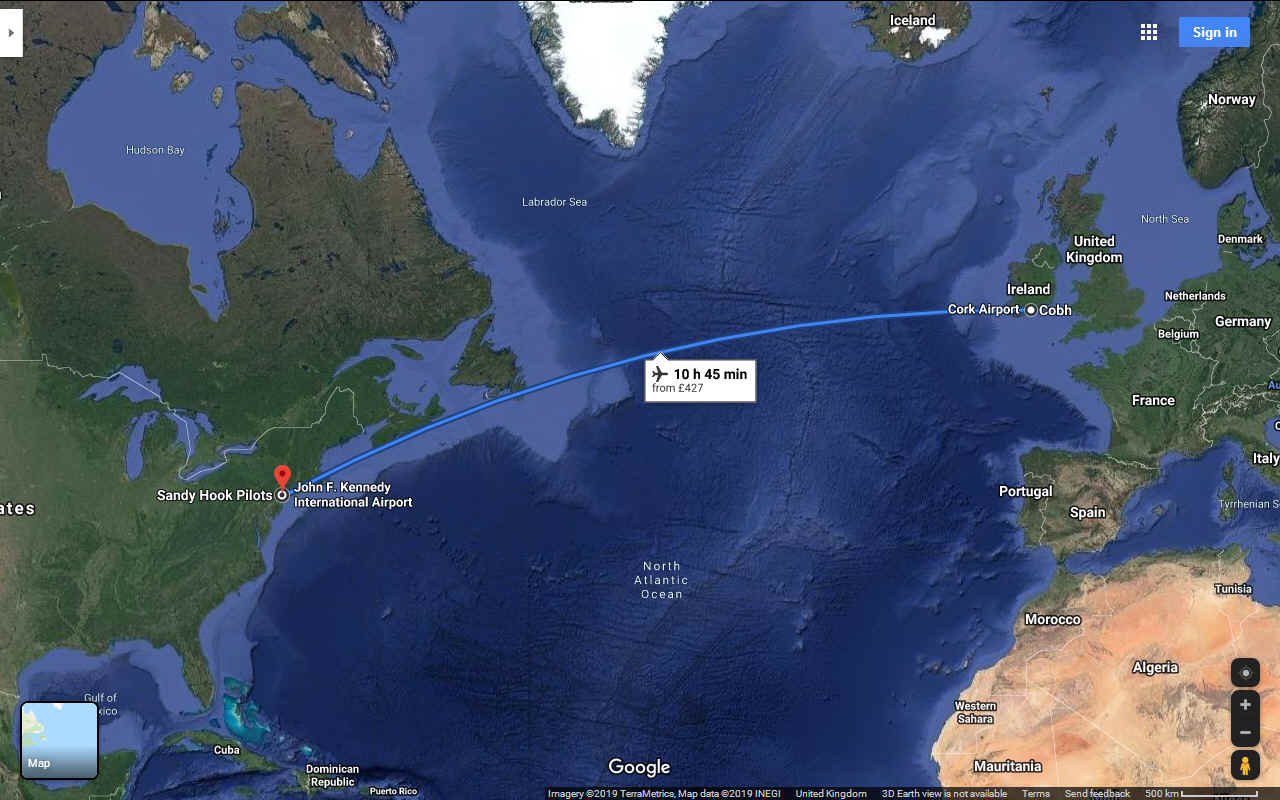
STEAMSHIPS - For
coal burning behemoths like the Lusitania, Queen Mary and United States
the westbound route against the prevailing wind was the route of choice. In
a modern world beset by rising seas and acid oceans, we are raising the bar.
The new goal is to conquer the pond with a zero carbon vessel. This means
rule changes to allow eastbound travel form New York to Cork or Plymouth,
and from Portugal, Spain and Africa to the West Indies.

The
Blue Ribbon was an award for the fastest North Atlantic crossing, from
Liverpool to New York's Sandy Hook or Ambrose Lightship, a distance of 2,800
nautical miles. It is not for the fastest crossing, but the best average
speed, since ships take different routes. This was a 20th Century trophy,
our cup is the 21st Century equivalent.
In
more recent years several projects that were not true to the concept of
Harold Hales MP, have been proposed as Blue Riband projects, but could not
meet the rule as to scheduled passenger services. We believe that a zero
carbon vessel that advertises for passengers (and actually carries them),
even during a limited service, would meet the objectives of the founder, to
further the achievements of mankind.
Where
climate change is concerned, zero
carbon shipping is the new international goal to reduce global
warming. The United Nations' International Maritime Organization have
raised the bar by introducing zero carbon shipping as a target for 2100.
That may sound easy and something we should not have to worry about with the
end some eighty years away, hence most of us reading this page will be long
gone and will never see 100% carbon free ships ply the oceans - or so you
would think.
But
that may not be the case, where the target for 2050 is 50% zero carbon
shipping and the concept boat below might achieve an transatlantic crossing
with fare paying passengers within 10 years - if we get a move on.
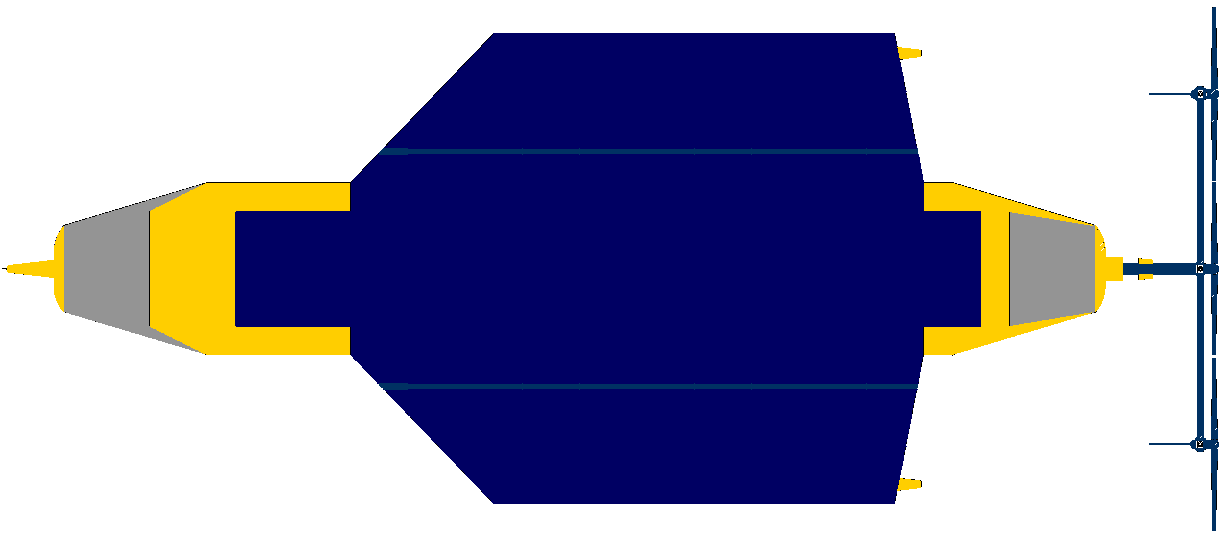
ZERO
CARBON GAME CHANGER - This diagram of a proposed 43m transatlantic vessel shows a triple wind turbine configuration allied
to 270m2 of solar panels to provide an advanced energy harvesting platform.
This wind turbine arrangement is likely to translate to either two (twin)
units at either end of the vessel, or just two larger turbines. As
rotary sails, a 40mph wind on four 5 meter diameter sails would generate a
1534kg of thrust [3380lbs]. Two 10 meter turbines would generate a
theoretical 3068kg [6763lbs] or 3 tons of thrust to add to the thrust from
the electrically driven propeller in the water. This is in theory, the
concept needs to be tried.
Wind speed is of course variable and directional, but on average
the forces generated will decrease passage time on all ships taking as much
advantage as possible of trade
winds. For larger vessels
traversing trade routes, the advantage could be considerable. Please note that this
drawing is Design Copyright © September 8 2019, and the hull
configuration and energy harvesting system are patent
protected.
The
Atlantic Challenge is open to any vessel that is zero carbon and not powered
by sails alone, hence is not a conventional sailing yacht. Entrants might be
solar powered, solar and wind generator (or turbine) powered, hydrogen
fuel cell powered, or battery powered.
The
current record of 5.3 knots across the Atlantic is held by PlanetSolar,
but was not carrying fare paying passengers at the time.
This new achievement
was part of PlanetSolar's commitment to push the limits of technology further during her 2013
missions, following maintenance and optimization work. The ship remained docked in the idyllic Fort Louis Marina in Marigot from May 18 – 22. She
then headed for Miami (United States), where she began her 'PlanetSolar DeepWater' scientific expedition along the Gulf Stream.
During the trip around the world (2010-2012), the MS Tûranor PlanetSolar sailed for 26 days from one side of the Atlantic to the other, thereby claiming the world record speed for a solar-powered transatlantic crossing and her first entry in the
Guinness World Records.
This
record had not been broken in over seven years.
It was not until 2013 that the largest solar boat in the world repeated the trip to realize a new
transatlantic accomplishment: 22 days, 12 hours, and 32 minutes. Having left from Las Palmas (Spain) on April 25, 2013, the ship sailed 2867 miles (5310 km) across the
Atlantic Ocean at the average speed of 5.3 knots before reaching Marigot (St. Martin, French West Indies) on May 18th.
Gérard d'Aboville is quoted as saying:
'Once again, the boat provided a brilliant demonstration of solar energy's potential by breaking its own speed record for a transatlantic crossing set in 2010, improving it by 4 days, 6 hours, and 38 minutes. It is difficult to compare the two crossings because they were conducted at very different times of the year. But it is certain that in light of the lessons learned during the trip around the world, the major maintenance projects carried out last winter—particularly to the propulsion system—have greatly improved the ship's performance. She will now travel to Miami to begin her second life as part of an exploratory mission along the Gulf Stream current conducted by the University of Geneva,'
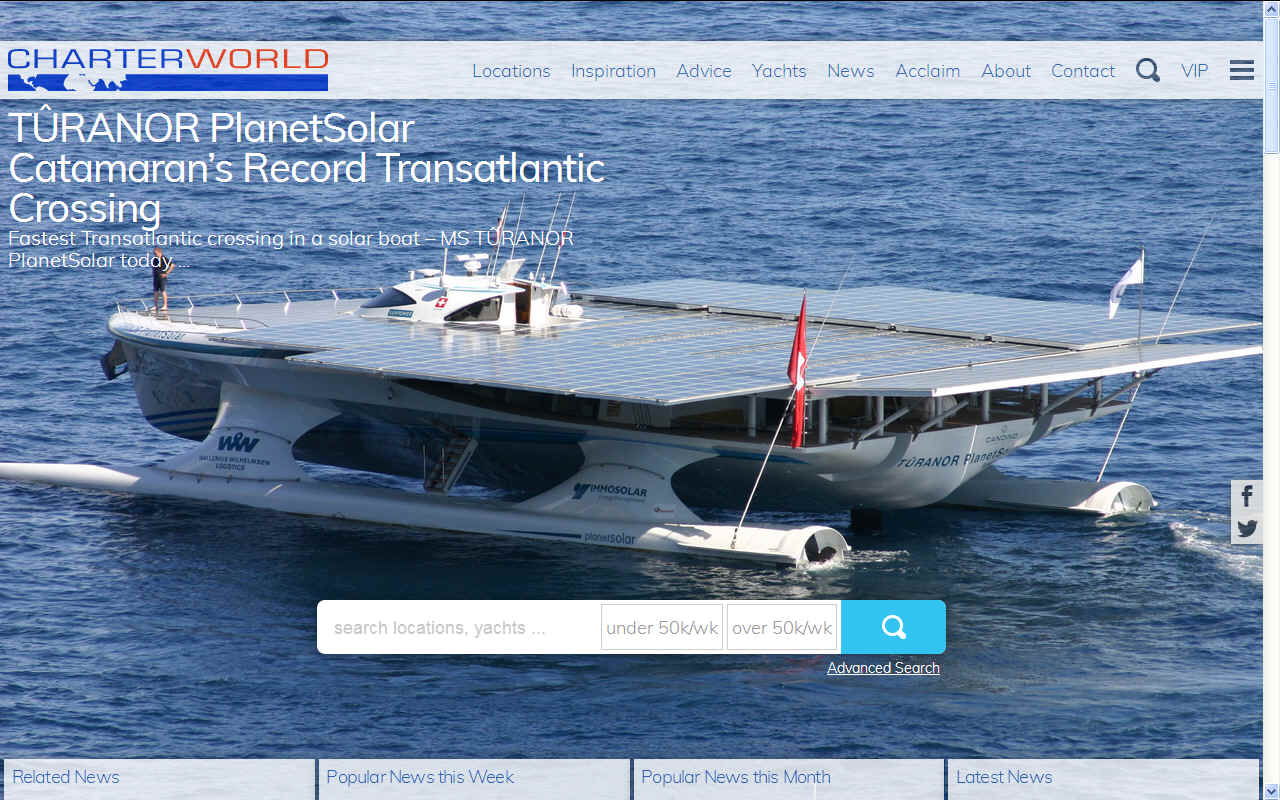
CHARTER WORLD
NOVEMBER 2010 - Today, on November 18, TÛRANOR PlanetSolar briefly stopped in St Martin to register the fasted Transatlantic crossing of a solar boat yet. For TÛRANOR, it took 26 days and 19 hours 10 minutes to cover the distance between Las Palmas and St Marteen (before: Sun21 crossing the Atlantic in 2007 in 29 days, 8 hours 30 minutes). PlanetSolar’s project founder Raphaël Domjan (38) and the TÛRANOR Crew – Captain Patrick Marchesseau, Mikaela von Koskull, Jens Langwasser, Christian Ochsenbein and Daniel Stahl have covered 2.690 miles / 4.982 kilometres from Las Palmas to St. Marteen.
A technological feat of German-Swiss cooperation, the catamaran, measuring close to 102 feet in length and 50 feet in width, is on a pioneering circumnavigation around the globe entirely without the use of traditional fuels. It is powered exclusively by solar energy. The project PlanetSolar, based on the shores of Lake Neuchâtel in Switzerland and initiated by the Swiss Raphaël Domjan, seeks to test the boundaries of solar technologies and inspire people across the world with its ambitious voyage, attempting the first circumnavigation of the seas exclusively with solar power. Sailing under Swiss flag, the TÛRANOR PlanetSolar is literally carrying the message of the potential of solar energy around the world. For this project, high-efficiency solar cells of the US manufacturer SunPower Corporation (San Jose, California) were used. Through extensive manual work, an exceptionally large marine solar generator with a total area of approx. 540 m2 was created.
The
age of splendor and extravagance that causes harm to our environment is
coming to a close. If that level of luxury can be maintained sustainably, we
might continue to enjoy ocean holidays. Regular cruise liners will become
relics of a bygone age. Indeed, the coal
burning steamships that plied the oceans were part of the problem that we
are trying to solve.
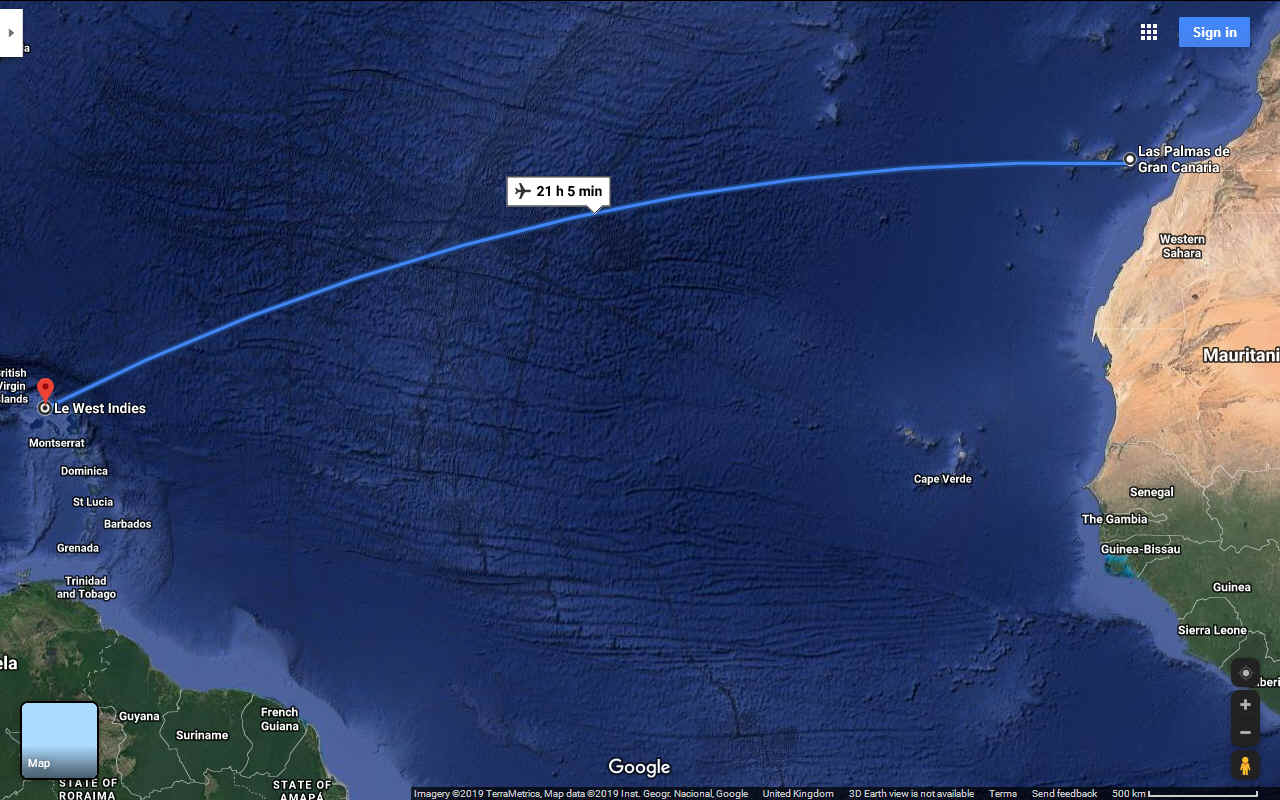
WESTBOUND - Changing
the goalposts a little in the interests of fairness, zero carbon boats and
ships might travel westward across the Atlantic and still be recognised for
their endeavours.
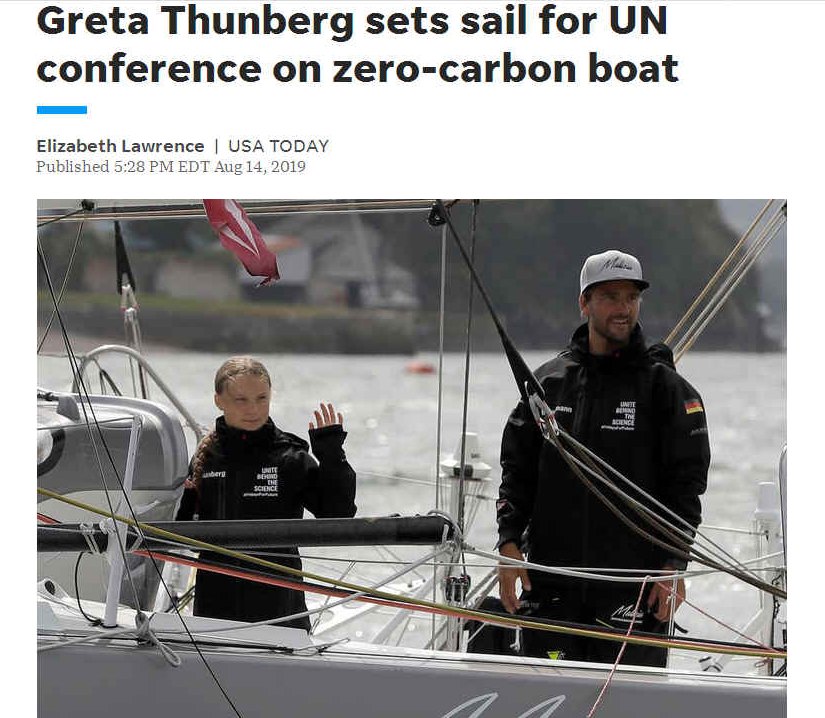
USA TODAY 14
AUGUST 2019 - Climate change activist Greta
Thunberg sets sail for New York in the 60ft
Malizia II yacht from Mayflower Marina, on August 14, 2019 in Plymouth,
England.
The Swedish activist Greta
Thunberg began her journey to the United States
today for the United
Nations Climate
Conference. Her mode of travel is fitting for someone who’s climate
conscious: She’s arriving in an eco-friendly boat propelled by the wind,
with solar panels and wind turbines to power the navigation
instruments and other boat equipment.
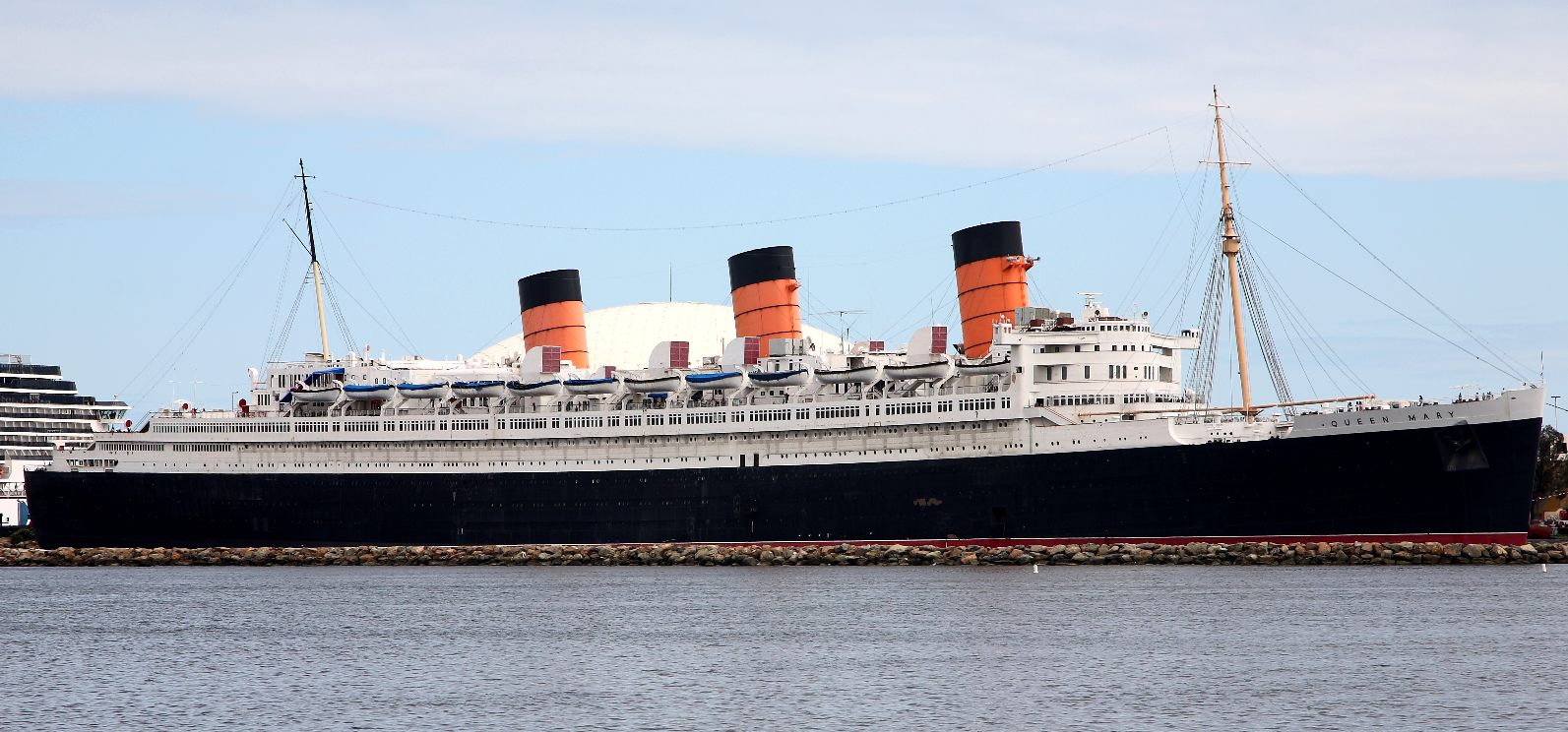
Today, we want to replace the bunker
fueled cruise liners with clean ships that passengers might enjoy with a
clean conscience. Fossil fuels should be replaced wherever possible by renewable
energy sources.
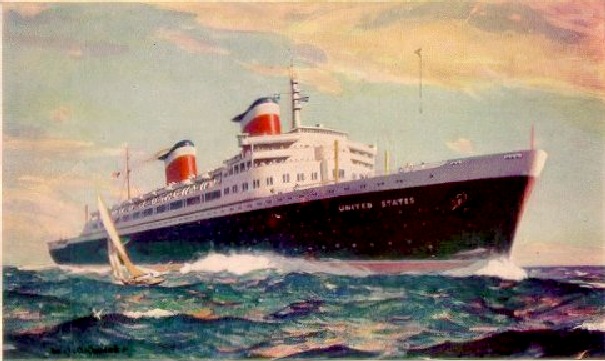
...
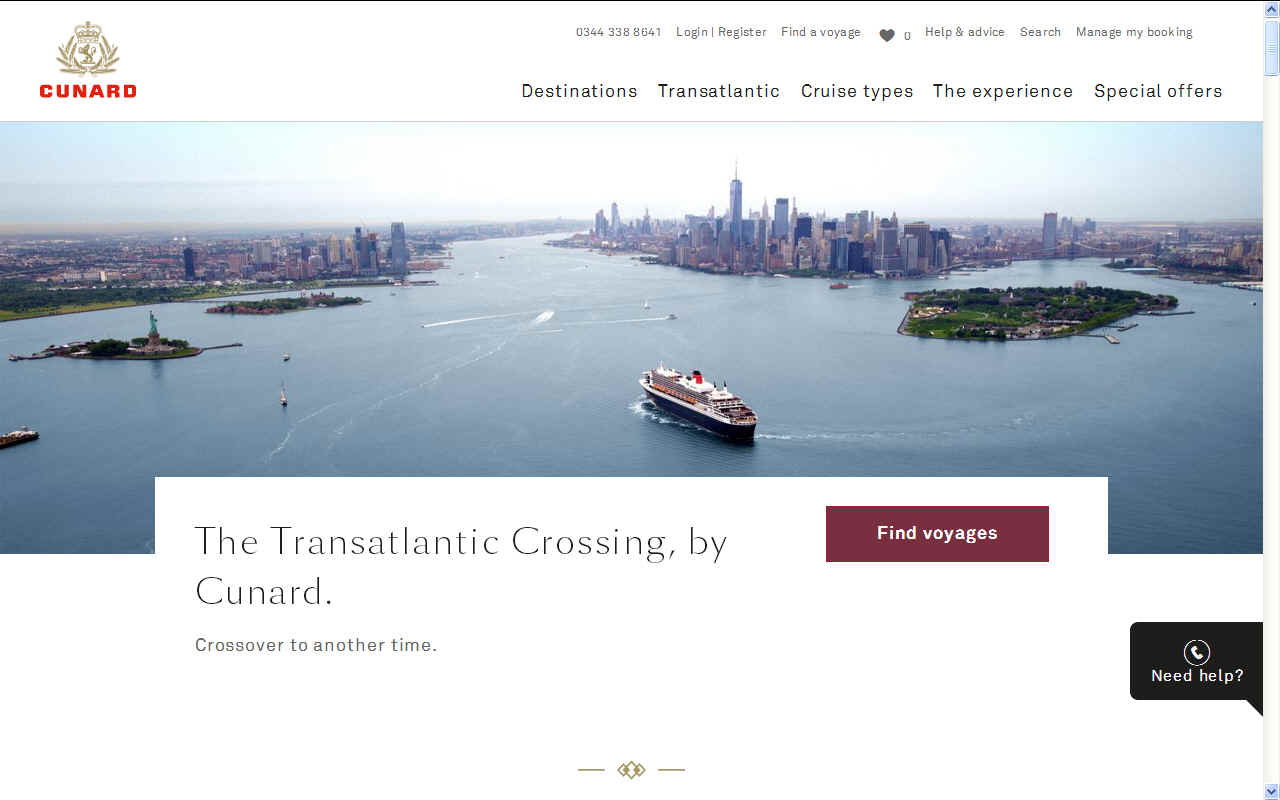
....
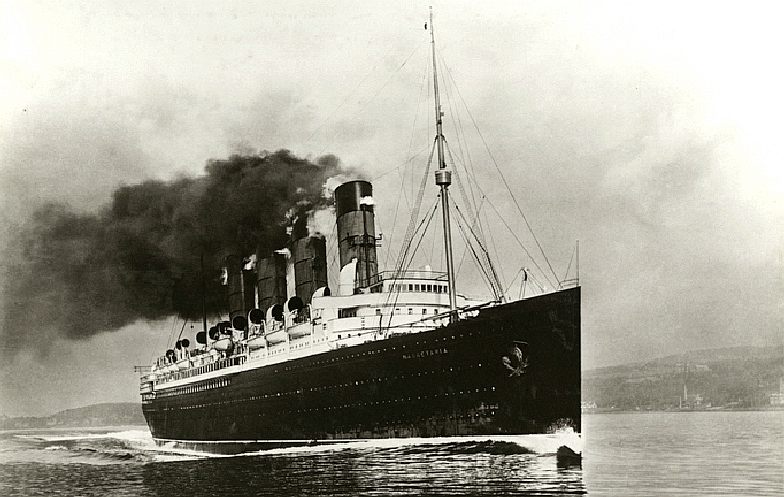
MAURETANIA - Sister
ship to the Titanic
and Lusitania,
the Mauretania held the Blue Riband for longer than any other
ship. That also means that she belched more black smoke than
any other, so must have been one of the most polluting steam
ships in history. The Lusitania was topedoed by a U20
on May 7 2015. The Titanic struck an iceberg in the Atlantic.
The Mauretania captured the Eastbound Blue Riband on her maiden return voyage in December 1907, then claimed the Westbound Blue Riband for the fastest transatlantic crossing during her 1909 season. She held both speed records for 20
years, operating for 27 years in total. She was scrapped
between 1935-37.

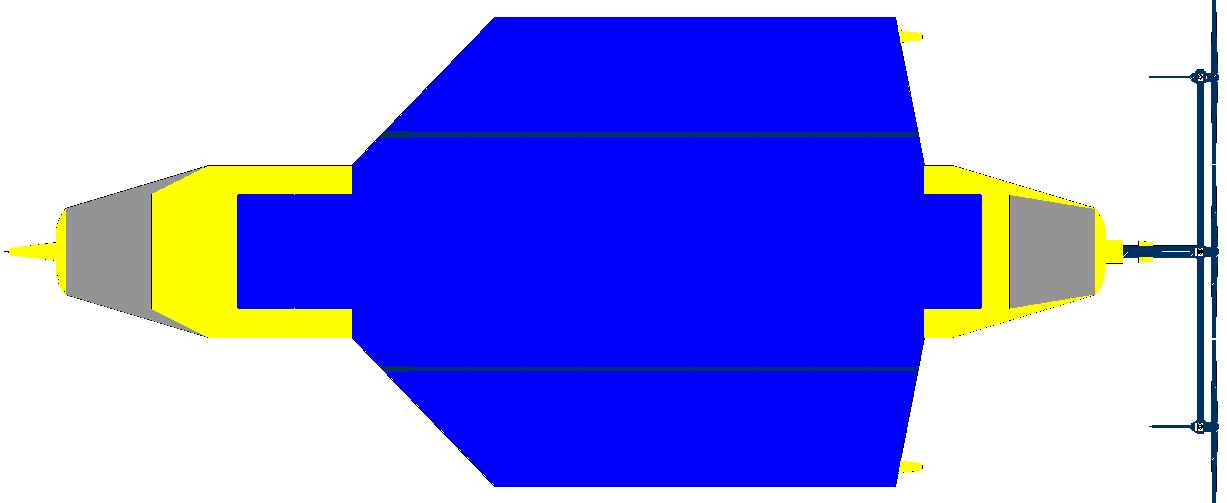

CONTACTS Climate
Change Challengers Cleaner
Ocean Foundation & Bluebird
Marine Systems Ltd Solar
Studios BN271RF United
Kingdom
growth@blue-growth.org
LINKS
& REFERENCES
https://www.cunard.com/en-gb/cruise-destinations/transatlantic
https://www.charterworld.com/news/tranor-planetsolar-catamarans-record-transatlantic-crossing
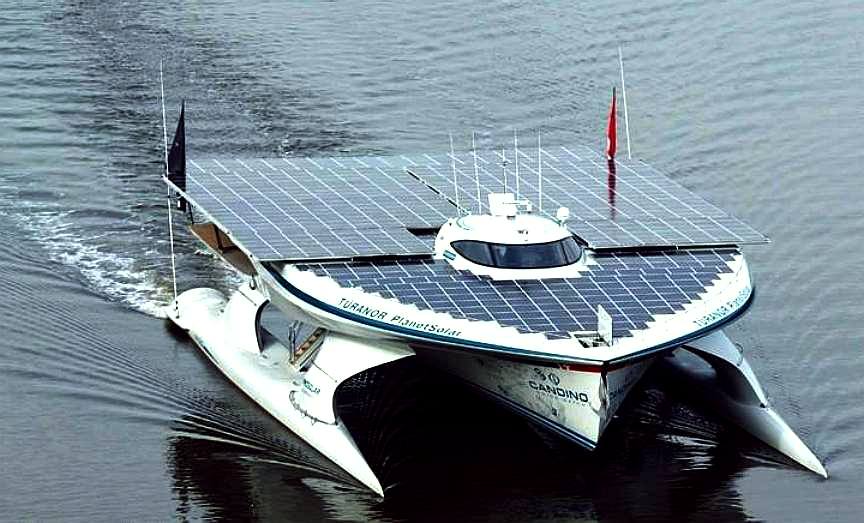
GUINNESS
BOOK OF RECORDS -
MS
Turanor PlanetSolar (Switzerland) navigated the world in
a westward direction from Monaco in 1 year 7 months and 7 days
from 27 September 2010 to 4 May 2012. We wonder why nobody has
attempted to improve on this design, to challenge the record in the intervening seven
years.
BLUE
RIBAND RECORD HOLDERS (Westbound)
| Ship |
Year |
Dates |
Line |
From |
To |
Distance |
Time |
Speed |
|
|
|
|
|
|
|
|
|
|
Columbia
USA
|
1830
|
1
– 17 April
|
Black
Ball Line
|
Portsmouth
|
Sandy
Hook
|
3,222
nautical miles (5,967 km)
|
15
d, 23 h
|
8.41
knots (15.58 km/h)
|
|
Great
Western UK
|
1838
|
8
– 23 April
|
GW
|
Avonmouth
|
New
York
|
3,220
nautical miles (5,960 km)
|
15
d, 12 h, 0 m
|
8.66
knots (16.04 km/h)
|
|
Great
Western UK
|
1838
|
2
– 17 June
|
GW
|
Avonmouth
|
New
York
|
3,140
nautical miles (5,820 km)
|
14
d, 16 h, 0 m
|
8.92
knots (16.52 km/h)
|
|
Great
Western UK
|
1839
|
18
May–31 May
|
GW
|
Avonmouth
|
New
York
|
3,086
nautical miles (5,715 km)
|
13
d, 12 h, 0 m
|
9.52
knots (17.63 km/h)
|
|
Columbia
UK
|
1841
|
4
– 15 June
|
Cunard
|
Liverpool
|
Halifax
|
2,534
nautical miles (4,693 km)
|
10
d, 19 h, 0 m
|
9.78
knots (18.11 km/h)
|
|
Great
Western UK
|
1843
|
29
April–11 May
|
GW
|
Liverpool
|
New
York
|
3,068
nautical miles (5,682 km)
|
12
d, 18 h, 0 m
|
10.03
knots (18.58 km/h)
|
|
Cambria
UK
|
1845
|
19
– 29 July
|
Cunard |
Liverpool
|
Halifax
|
2,534
nautical miles (4,693 km)
|
9
d, 20 h, 30 m
|
10.71
knots (19.83 km/h)
|
|
America
UK
|
1848
|
3
– 12 June
|
Cunard |
Liverpool
|
Halifax
|
2,534
nautical miles (4,693 km)
|
9
d, 0 h, 16 m
|
11.71
knots (21.69 km/h)
|
|
Europa
UK
|
1848
|
14
– 23 October
|
Cunard |
Liverpool
|
Halifax
|
2,534
nautical miles (4,693 km)
|
8
d, 23 h, 0 m
|
11.79
knots (21.84 km/h)
|
|
Asia
UK
|
1850
|
18
May–27 May
|
Cunard |
Liverpool
|
Halifax
|
2,534
nautical miles (4,693 km)
|
8
d, 14 h, 50 m
|
12.25
knots (22.69 km/h)
|
|
Pacific
USA
|
1850
|
11
– 21 September
|
Collins
|
Liverpool
|
New
York
|
3,050
nautical miles (5,650 km)
|
10
d, 4 h, 45 m
|
12.46
knots (23.08 km/h)
|
|
Baltic
USA
|
1851
|
6
– 16 August
|
Collins
|
Liverpool
|
New
York
|
3,039
nautical miles (5,628 km)
|
9
d, 19 h, 26 m
|
12.91
knots (23.91 km/h)
|
|
Baltic
USA
|
1854
|
28
June – 7 July
|
Collins
|
Liverpool
|
New
York
|
3,037
nautical miles (5,625 km)
|
9
d, 16 h, 52 m
|
13.04
knots (24.15 km/h)
|
|
Persia
UK
|
1856
|
19
– 29 April
|
Cunard
|
Liverpool
|
Sandy
Hook
|
3,045
nautical miles (5,639 km)
|
9
d, 16 h, 16 m
|
13.11
knots (24.28 km/h)
|
|
Scotia
UK
|
1863
|
19
– 27 July
|
Cunard
|
Queenstown
|
New
York
|
2,820
nautical miles (5,220 km)
|
8
d, 3 h, 0 m
|
14.46
knots (26.78 km/h)
|
|
Adriatic
UK
|
1872
|
17
May–25 May
|
W.Star
|
Queenstown
|
Sandy
Hook
|
2,778
nautical miles (5,145 km)
|
7
d, 23 h, 17 m
|
14.53
knots (26.91 km/h)
|
|
Germanic
UK
|
1875
|
30
July – 7 August
|
W.Star
|
Queenstown
|
Sandy
Hook
|
2,800
nautical miles (5,200 km)
|
7
d, 23 h, 7 m
|
14.65
knots (27.13 km/h)
|
|
City
of Berlin UK
|
1875
|
17
– 25 September
|
Inman
|
Queenstown
|
Sandy
Bank
|
2,829
nautical miles (5,239 km)
|
7
d, 18 h, 2 m
|
15.21
knots (28.17 km/h)
|
|
Britannic
UK
|
1876
|
27
October – 4 November
|
W.Star
|
Queenstown
|
Sandy
Hook
|
2,795
nautical miles (5,176 km)
|
7
d, 13 h, 11 m
|
15.43
knots (28.58 km/h)
|
|
Germanic
UK
|
1877
|
6
– 13 April
|
W.Star
|
Queenstown
|
Sandy
Hook
|
2,830
nautical miles (5,240 km)
|
7
d, 11 h, 37 m
|
15.76
knots (29.19 km/h)
|
|
Alaska
UK
|
1882
|
9
– 16 April
|
Guion
|
Queenstown
|
Sandy
Hook
|
2,802
nautical miles (5,189 km)
|
7
d, 6 h, 20 m
|
16.07
knots (29.76 km/h)
|
|
Alaska
UK
|
1882
|
14
May–21 May
|
Guion
|
Queenstown
|
Sandy
Hook
|
2,871
nautical miles (5,317 km)
|
7
d, 4 h, 12 m
|
16.67
knots (30.87 km/h)
|
|
Alaska
UK
|
1882
|
18
– 25 June
|
Guion
|
Queenstown |
Sandy
Hook
|
2,886
nautical miles (5,345 km)
|
7
d, 1 h, 58 m
|
16.98
knots (31.45 km/h)
|
|
Alaska
UK
|
1883
|
29
April–6 May
|
Guion
|
Queenstown |
Sandy
Hook
|
2,844
nautical miles (5,267 km)
|
6
d, 23 h, 48 m
|
17.05
knots (31.58 km/h)
|
|
Oregon
UK
|
1884
|
13
– 19 April
|
Guion
|
Queenstown |
Sandy
Hook
|
2,861
nautical miles (5,299 km)
|
6
d, 10 h, 10 m
|
18.56
knots (34.37 km/h)
|
|
Etruria
UK
|
1885
|
16
– 22 August
|
Cunard
|
Queenstown |
Sandy
Hook
|
2,801
nautical miles (5,187 km)
|
6
d, 5 h, 31 m
|
18.73
knots (34.69 km/h)
|
|
Umbria
UK
|
1887
|
29
May – 4 June
|
Cunard
|
Queenstown |
Sandy
Hook
|
2,848
nautical miles (5,274 km)
|
6
d, 4 h, 12 m
|
19.22
knots (35.60 km/h)
|
|
Etruria
UK
|
1888
|
27
May – 2 June
|
Cunard
|
Queenstown |
Sandy
Hook
|
2,854
nautical miles (5,286 km)
|
6
d, 1 h, 55 m
|
19.56
knots (36.23 km/h)
|
|
City
of Paris UK
|
1889
|
2
May–8 May
|
Inman
|
Queenstown |
Sandy
Hook
|
2,855
nautical miles (5,287 km)
|
5
d, 23 h, 7 m
|
19.95
knots (36.95 km/h)
|
|
City
of Paris UK
|
1889
|
22
– 28 August
|
Inman
|
Queenstown |
Sandy
Hook
|
2,788
nautical miles (5,163 km)
|
5
d, 19 h, 18 m
|
20.01
knots (37.06 km/h)
|
|
Majestic
UK
|
1891
|
30
July – 5 August
|
W.Star
|
Queenstown |
Sandy
Hook
|
2,777
nautical miles (5,143 km)
|
5
d, 18 h, 8 m
|
20.10
knots (37.23 km/h)
|
|
Teutonic
UK
|
1891
|
13
– 19 August
|
W.Star
|
Queenstown |
Sandy
Hook
|
2,778
nautical miles (5,145 km)
|
5
d, 16 h, 31 m
|
20.35
knots (37.69 km/h)
|
|
City
of Paris UK
|
1892
|
20
– 27 July
|
Inman
|
Queenstown |
Sandy
Hook
|
2,785
nautical miles (5,158 km)
|
5
d, 15 h, 58 m
|
20.48
knots (37.93 km/h)
|
|
City
of Paris UK
|
1892
|
13
– 18 October
|
Inman
|
Queenstown |
Sandy
Hook
|
2,782
nautical miles (5,152 km)
|
5
d, 14 h, 24 m
|
20.70
knots (38.34 km/h)
|
|
Campania
UK
|
1893
|
18
– 23 June
|
Cunard |
Queenstown |
Sandy
Hook
|
2,864
nautical miles (5,304 km)
|
5
d, 15 h, 37 m
|
21.12
knots (39.11 km/h)
|
|
Campania
UK
|
1894
|
12
– 17 August
|
Cunard |
Queenstown |
Sandy
Hook
|
2,776
nautical miles (5,141 km)
|
5
d, 9 h, 29 m
|
21.44
knots (39.71 km/h)
|
|
Lucania
UK
|
1894
|
26
– 31 August
|
Cunard |
Queenstown |
Sandy
Hook
|
2,787
nautical miles (5,162 km)
|
5
d, 8 h, 38 m
|
21.65
knots (40.10 km/h)
|
|
Lucania
UK
|
1894
|
23
– 28 September
|
Cunard |
Queenstown |
Sandy
Hook
|
2,782
nautical miles (5,152 km)
|
5
d, 7 h, 48 m
|
21.75
knots (40.28 km/h)
|
|
Lucania
UK
|
1894
|
21
– 26 October
|
Cunard
|
Queenstown |
Sandy
Hook
|
2,779
nautical miles (5,147 km)
|
5
d, 7 h, 23 m
|
21.81
knots (40.39 km/h)
|
|
Kaiser
Wilhelm der Grosse GM
|
1898
|
30
March – 3 April
|
NDL
|
The
Needles
|
Sandy
Hook
|
3,120
nautical miles (5,780 km)
|
5
d, 20 h, 0 m
|
22.29
knots (41.28 km/h)
|
|
Deutschland
GM
|
1900
|
6
– 12 July
|
Hapag
|
Eddystone
|
Sandy
Hook
|
3,044
nautical miles (5,637 km)
|
5
d, 15 h, 46 m
|
22.42
knots (41.52 km/h)
|
|
Deutschland
GM
|
1900
|
26
August – 1 September
|
Hapag
|
Cherbourg
|
Sandy
Hook
|
3,050
nautical miles (5,650 km)
|
5
d, 12 h, 29 m
|
23.02
knots (42.63 km/h)
|
|
Deutschland
GM
|
1901
|
26
July – 1 August
|
Hapag
|
Cherbourg
|
Sandy
Hook
|
3,141
nautical miles (5,817 km)
|
5
d, 16 h, 12 m
|
23.06
knots (42.71 km/h)
|
|
Kronprinz
Wilhelm GM
|
1902
|
10
– 16 September
|
NDL
|
Cherbourg
|
Sandy
Hook
|
3,047
nautical miles (5,643 km)
|
5
d, 11 h, 57 m
|
23.09
knots (42.76 km/h)
|
|
Deutschland
GM
|
1903
|
2
– 8 September
|
Hapag
|
Cherbourg
|
Sandy
Hook
|
3,054
nautical miles (5,656 km)
|
5
d, 11 h, 54 m
|
23.15
knots (42.87 km/h)
|
|
Lusitania
- UK
|
1907
|
6
– 10 October
|
Cunard |
Queenstown |
Sandy
Hook
|
2,780
nautical miles (5,150 km)
|
4
d, 19 h, 52 m
|
23.99
knots (44.43 km/h)
|
|
Lusitania
- UK
|
1908
|
17
May–21 May
|
Cunard |
Queenstown |
Sandy
Hook
|
2,889
nautical miles (5,350 km)
|
4
d, 20 h, 22 m
|
24.83
knots (45.99 km/h)
|
|
Lusitania
- UK
|
1908
|
5
– 10 July
|
Cunard |
Queenstown |
Sandy
Hook
|
2,891
nautical miles (5,354 km)
|
4
d, 19 h, 36 m
|
25.01
knots (46.32 km/h)
|
|
Lusitania
- UK
|
1909
|
8
– 12 August
|
Cunard |
Queenstown |
Ambrose
Light
|
2,890
nautical miles (5,350 km)
|
4
d, 16 h, 40 m
|
25.65
knots (47.50 km/h)
|
|
Mauretania
- UK
|
1909
|
26
– 30 September
|
Cunard |
Queenstown |
Ambrose
Light
|
2,784
nautical miles (5,156 km)
|
4
d, 10 h, 51 m
|
26.06
knots (48.26 km/h)
|
|
Bremen
GM
|
1929
|
17
– 22 July
|
NDL
|
Cherbourg
|
Ambrose
Light
|
3,164
nautical miles (5,860 km)
|
4
d, 17 h, 42 m
|
27.83
knots (51.54 km/h)
|
|
Europa
GM
|
1930
|
20
– 25 March
|
NDL
|
Cherbourg
|
Ambrose
Light
|
3,157
nautical miles (5,847 km)
|
4
d, 17 h, 6 m
|
27.91
knots (51.69 km/h)
|
|
Bremen
GM
|
1933
|
27
June – 2 July
|
NDL
|
Cherbourg
|
Ambrose
Light
|
3,149
nautical miles (5,832 km)
|
4
d, 16 h, 48 m
|
27.92
knots (51.71 km/h)
|
|
Rex
IT
|
1933
|
11
– 16 August
|
Italian
|
Gibraltar
|
Ambrose
Light
|
3,181
nautical miles (5,891 km)
|
4
d, 13 h, 58 m
|
28.92
knots (53.56 km/h)
|
|
Normandie
FR
|
1935
|
30
May – 3 June
|
CGT
|
Bishop
Rock
|
Ambrose
Light
|
2,971
nautical miles (5,502 km)
|
4
d, 3 h, 2 m
|
29.98
knots (55.52 km/h)
|
|
Queen
Mary UK
|
1936
|
20
– 24 August
|
C-WS
|
Bishop
Rock
|
Ambrose
Light
|
2,907
nautical miles (5,384 km)
|
4
d, 0 h, 27 m
|
30.14
knots (55.82 km/h)
|
|
Normandie
FR
|
1937
|
29
July – 2 August
|
CGT
|
Bishop
Rock
|
Ambrose
Light
|
2,906
nautical miles (5,382 km)
|
3
d, 23 h, 2 m
|
30.58
knots (56.63 km/h)
|
|
Queen
Mary UK
|
1938
|
4
– 8 August
|
C-WS
|
Bishop
Rock
|
Ambrose
Light
|
2,907
nautical miles (5,384 km)
|
3
d, 21 h, 48 m
|
30.99
knots (57.39 km/h)
|
|
United
States USA
|
1952
|
11
– 15 July
|
USL
|
Bishop
Rock
|
Ambrose
Light
|
2,906
nautical miles (5,382 km)
|
3
d, 12 h, 12 m
|
34.51
knots (63.91 km/h)
|
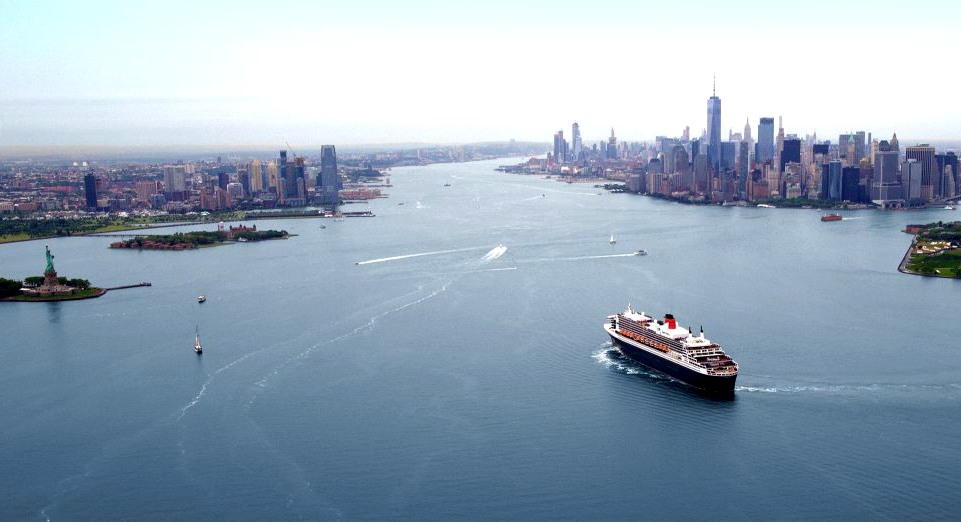
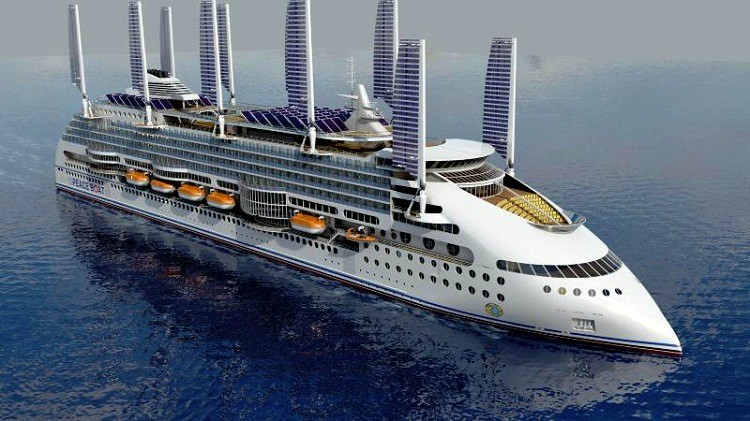
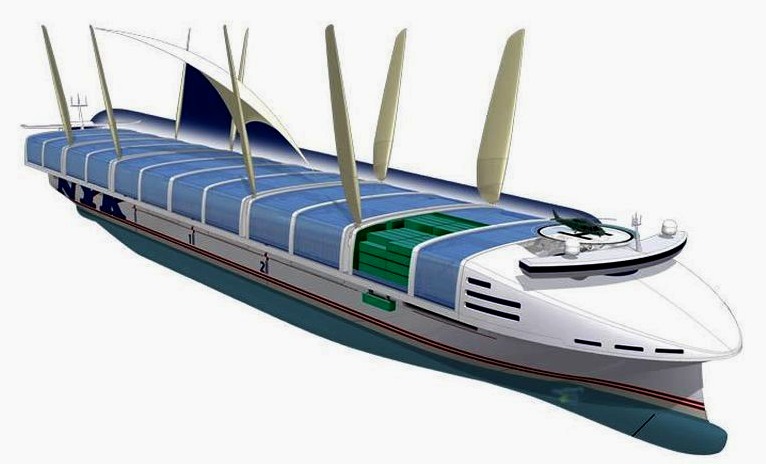
TRANSFERABLE
TECHNOLOGY - The design of the
Atlantic
Challenger
might be adapted to Cargo, Container, Cruise and Ferry
designs, without needing to radically alter port facilities.
The designs above are not representative of adaptations of the
concept, but serve to illustrate the thinking of other design
houses.
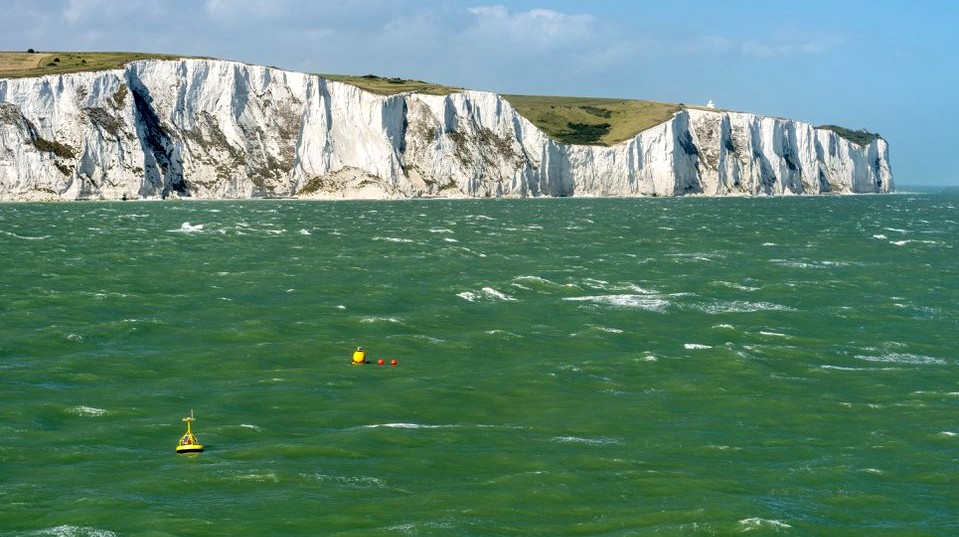
Please use our A-Z
INDEX to navigate this site
|















